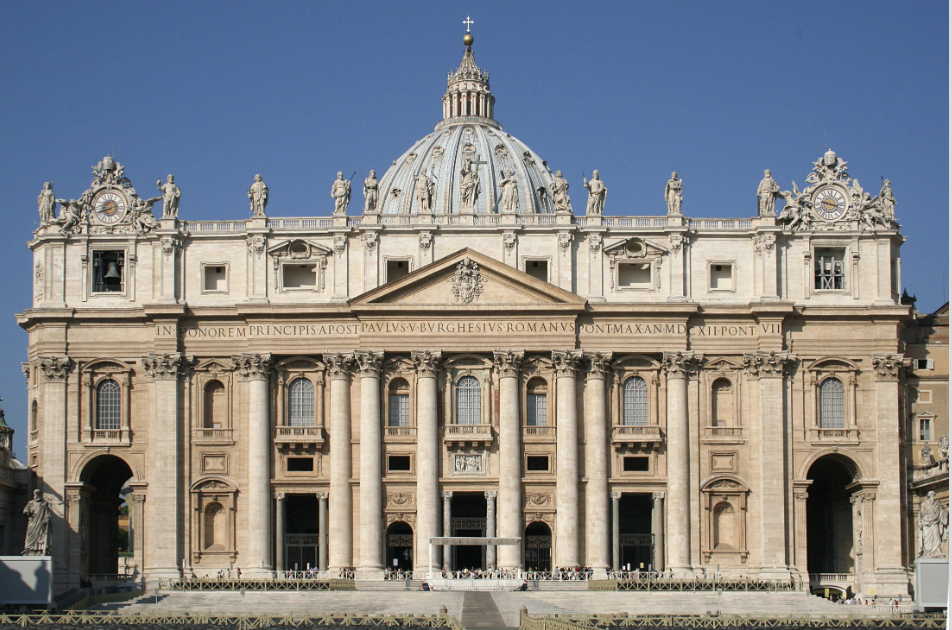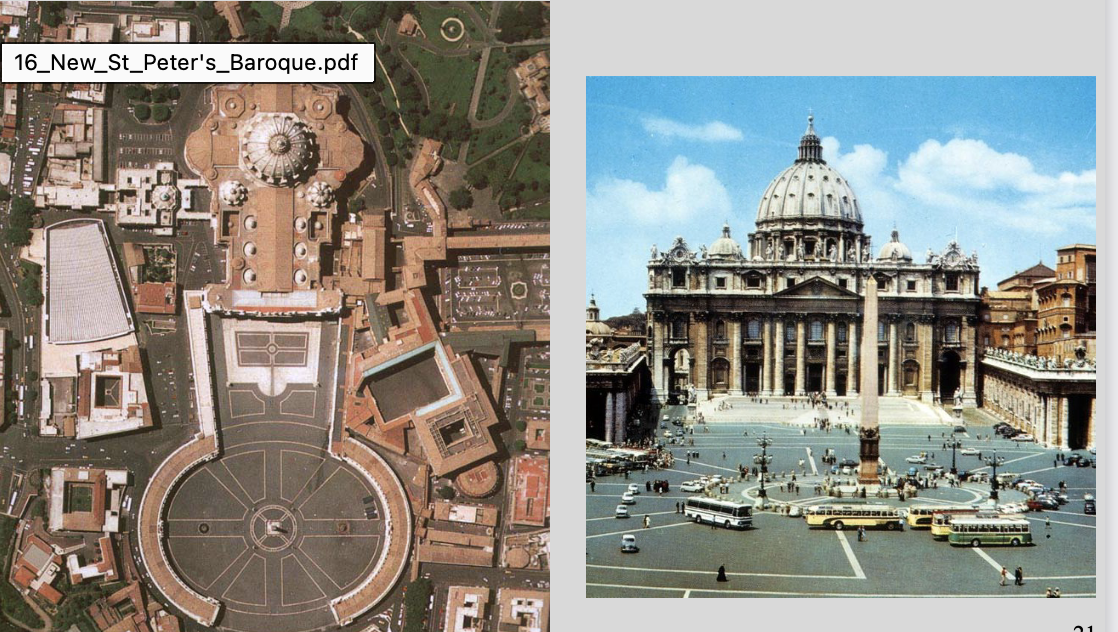The Baroque: New Saint Peter's and the Reorganization of Rome
1/15
There's no tags or description
Looks like no tags are added yet.
Name | Mastery | Learn | Test | Matching | Spaced |
|---|
No study sessions yet.
16 Terms
Baroque in Rome was brought about in part by the __________ (1545-1700), the Catholic Church’s response to the Protestant Reformation.
Counter Reformation
Council of Trent (1545-1563)
proclaimed that architecture and art had no role as media for propaganda
What was the goal of art in the Baroque period?
to restore Catholicism’s predominance and centrality

Il Gesù
Artists: Giacomo della Porta (façade) and Giacomo della Vignola (plan)
1568 / Mannerist
Patron: Cardinal Alessandro Farnese
scrolled buttresses are reminiscent of Santa Maria Novella in Florence
this kind of façade will become very influential

Façade for New Saint Peter’s Basilica
1612 / Baroque
Artist: Carlo Maderno
Patron: Pope Paul V
departed from 16th century Renaissance designs
had to work with existing buildings
appears wider than was originally intended

Baldacchino (Saint Peter’s Basilica)
1624-1633
Artist: Bernini
Patron: Urban VIII
gilt bronze
Solomonic columns

Piazza in front of Saint Peter’s Basilica
1656-1667
Bernini
Patron: Alexander VII
arms embracing the faithful
keyhole shape
illusion that façade is less wide
saints literally looked up to
Saint Teresa of Avila in Ecstasy
Bernini
1645-1652 / Baroque
Bernini
Marble, stucco, gold
Patron: Cornaro Family
Church of Our Lady of Victory, Rome
teatrum sacrum
participation in his artwork
time of controversy regarding transubstantiation
Baroque
designation for the art of the period covering roughly 1600-1750; no one style or set of stylistic principles; succession of phases in international development; dynamism, dramatic theatricality, elaborate ornamentation; spectacular effect
Four phases of Baroque:
1590-1625: Early - essentially naturalistic, originates in Italy (Caravaggio)
1625-1660: High - sensualistic (Bernini, Borromini)
beginning in 1630: Classicist - order, clarity, composure (Poussin)
1660-1725: Late - Louis XIV style in France
Counter Reformation
from 1545-1700; the Catholic Church’s response to the Protestant Reformation which led to Baroque art among other things
obelisk
a tall four-sided monolithic pillar with a pyramidal top - symbol of the Egyptian sun god Re
Solomonic columns
twisted columns thought to be reminiscent of the columns that came from the Temple of Solomon
Cathedra Petri
the throne of Saint Peter made of stucco and marble by Bernini in 1666 which contains a relic of the true throne of Peter; commissioned by Alexander VII
piazza
an open public area in a town or city especially in Italy that is usually surrounded by buildings
teatrum sacrum
literally “sacred theater”; using a mix of art and architecture it creates a theatrical space for holy acts carried out by sacred actors (ex: saint teresa in ecstasy)